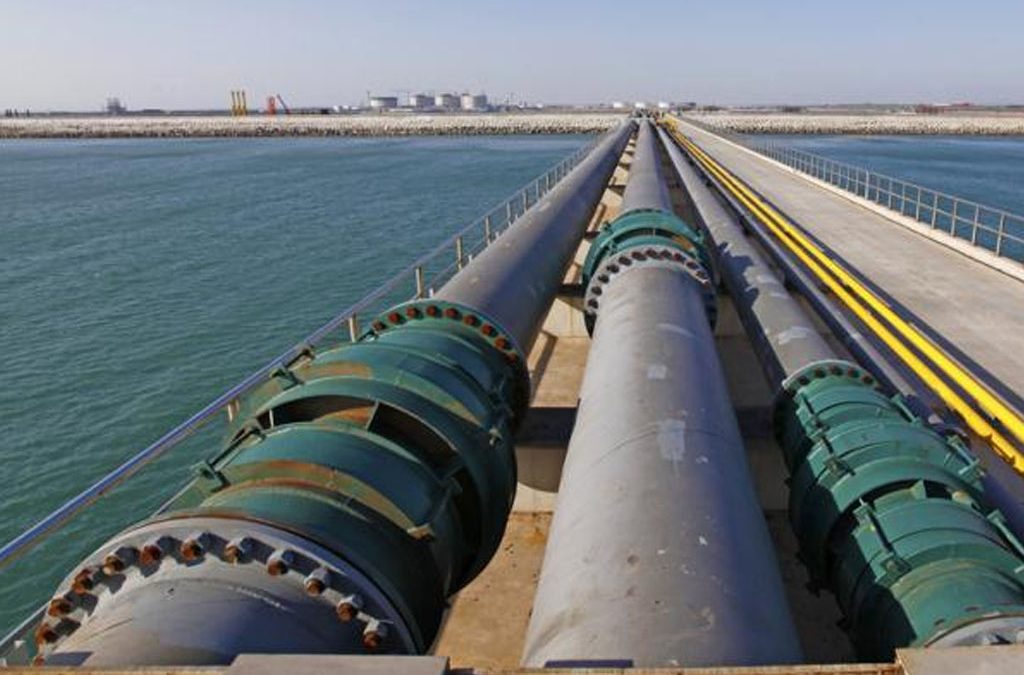In 2015, Uganda faced a critical decision that would shape the future of its oil industry: choosing between Kenya and Tanzania as the primary route for its crude oil export pipeline. This evaluation sparked intense regional debate, geopolitical maneuvering, and economic calculations—with far-reaching consequences for East Africa’s energy landscape.
This in-depth analysis explores:
- The Background: Uganda’s Oil Discovery & Export Dilemma
- The 2015 Pipeline Route Debate: Kenya vs. Tanzania
- Economic, Political, and Environmental Considerations
- Medic Holdings’ Strategic Positioning in the Pipeline Era
- How the Decision Shaped East Africa’s Oil Sector
- Current Status & Lessons Learned
By examining this pivotal moment through the lens of Medic Holdings Limited, a key player in East African petroleum logistics, we assess how pipeline politics influenced regional energy dynamics.
-
Background: Uganda’s Oil Discovery & Export Dilemma
Uganda’s Oil Boom (2006–2015)
- 2006: Uganda discovers 6.5 billion barrels of oil in the Albertine Graben.
- 2010–2014: Exploration confirms commercial viability, with estimated 1.4–1.7 billion barrels recoverable.
- Challenge: Uganda is landlocked—it needs a pipeline to export crude oil.
The Two Competing Routes
| Option | Kenya Route (Lamu) | Tanzania Route (Tanga) |
| Length | 1,200 km | 1,443 km |
| Cost | $3.5B (estimated) | $4B (estimated) |
| Port | Lamu Port | Tanga Port |
| Key Partners | Kenya, South Sudan | Tanzania, TotalEnergies |
Why 2015 Was a Turning Point
- Uganda had to finalize its pipeline choice to align with oil production timelines.
- Kenya pushed aggressively for the Lamu route (part of LAPSSET Corridor).
- Tanzania offered incentives, including tax breaks and security guarantees.
-
The 2015 Pipeline Route Debate: Kenya vs. Tanzania
Kenya’s Case for the Lamu Pipeline
✔ Shorter distance (1,200 km vs. Tanzania’s 1,443 km).
✔ Regional integration (links to South Sudan, Ethiopia via LAPSSET).
✔ Economic benefits for Northern Kenya.
But challenges included:
❌ Security risks (Somali militant threats near Lamu).
❌ Higher elevation changes, increasing pumping costs.
Tanzania’s Case for the Tanga Pipeline
✔ More stable route (lower security risks).
✔ Existing port infrastructure at Tanga.
✔ TotalEnergies’ preference (French oil major favored Tanzania).
But drawbacks included:
❌ Longer distance = higher construction costs.
❌ Less regional integration (primarily serves Uganda).
Medic Holdings’ Stake in the Decision
- As a major fuel distributor, Medic Holdings monitored:
- Future refined product flows (if Uganda built a refinery).
- Logistics opportunities along pipeline routes.
- Impact on fuel pricing in East Africa.
-
Economic, Political, and Environmental Factors
Economic Considerations
| Factor | Kenya Route | Tanzania Route |
| Construction Cost | $3.5B | $4B |
| Transit Fees | $12–15/barrel | $8–12/barrel |
| Regional Trade | Integrates LAPSSET | Limited to Uganda |
Political Dynamics
- Kenya’s Lobbying: President Uhuru Kenyatta personally pushed for the Lamu route.
- Tanzania’s Incentives: Offered tax breaks and faster permitting.
- Investor Influence: TotalEnergies preferred Tanzania due to stability.
Environmental & Social Concerns
- Kenya: Pipeline crossed protected wildlife areas.
- Tanzania: Required community resettlement near Tanga.
- Both routes faced NGO opposition over ecological risks.
-
Medic Holdings’ Strategic Positioning
Preparing for Either Outcome
- Kenya Route Scenario
- Expanding storage in Lamu for potential fuel trade.
- Partnering with Kenya Pipeline Company (KPC).
- Tanzania Route Scenario
- Securing Tanga Port storage contracts.
- Developing cross-border trucking networks.
Long-Term Business Implications
✔ If Kenya won:
- Medic could leverage its existing Kenyan operations.
- Benefit from LAPSSET-driven economic growth.
✔ If Tanzania won:
- New market opportunities in southern Uganda and Rwanda.
- Potential fuel supply deals with Tanzanian distributors.
-
The Decision & Its Aftermath
2016: Uganda Chooses Tanzania
- February 2016: Uganda officially selects the Tanga route.
- Reasons:
- TotalEnergies’ insistence (key project financier).
- Lower perceived risk (security, politics).
- Faster implementation timeline.
Impact on Kenya
- LAPSSET delayed without Ugandan crude.
- Turkana oil fields needed alternative export plans.
Impact on Tanzania
- Tanga Port expansion accelerated.
- New jobs in pipeline construction.
Medic Holdings’ Adaptation
- Shifted focus to Tanzania-Uganda fuel logistics.
- Expanded storage in Mwanza and Tanga.
- Joined Uganda’s refinery planning committees.
-
Current Status (2024) & Lessons Learned
Pipeline Progress
- 2023: Construction 80% complete, expected 2025 operational launch.
- Capacity: 216,000 barrels per day.
Medic Holdings Today
✔ Key fuel supplier along pipeline regions.
✔ Investing in heated storage for waxy Ugandan crude.
✔ Preparing for refined product distribution post-refinery.
Key Takeaways
- Geopolitics often outweigh pure economics in energy projects.
- Companies must stay agile in shifting regulatory landscapes.
- Regional partnerships are critical for long-term success.
Conclusion: How Pipeline Politics Redefined East Africa’s Energy Map
The 2015–2016 route debate was more than just about pipelines—it:
- Shaped Uganda’s oil future
- Tested East African cooperation
- Rewarded adaptable firms like Medic Holdings
-
The Ripple Effects on Regional Energy Security
Impact on Fuel Supply Chains
The pipeline route decision fundamentally altered East Africa’s petroleum logistics:
- Kenya’s Response
- Accelerated development of Lokichar-Lamu pipeline for Turkana crude
- Expanded Mombasa refinery capacity to 120,000 bpd
- Medic Holdings adapted by:
- Securing storage contracts in Lamu Special Economic Zone
- Developing cross-border fuel trucking networks
- Tanzania’s Gains
- Tanga Port upgrades ($350 million investment)
- New petroleum storage terminals along pipeline route
- Medic Holdings established:
- 25,000m³ storage facility in Tanga
- Joint venture with Tanzania Petroleum Development Corporation
Price Dynamics in Regional Markets
| Country | Pre-Pipeline (2015) | Post-Pipeline Projection (2025) |
| Uganda | $1.20/liter (imported) | $0.85/liter (domestic refining) |
| Kenya | $1.05/liter | $0.95/liter (increased competition) |
| Rwanda | $1.30/liter | $1.10/liter (improved logistics) |
-
Medic Holdings’ Evolving Business Model
Strategic Pivot to Integrated Energy Solutions
- Upstream Integration
- Partnership with TotalEnergies on crude logistics
- Specialized transport for waxy Ugandan crude
- Midstream Expansion
- $50 million investment in heated storage facilities
- Pipeline maintenance and security contracts
- Downstream Innovation
- Digital fuel management systems for industrial clients
- Clean energy transition initiatives (LPG, biofuels)
Financial Performance Indicators
| Metric | 2015 | 2020 | 2023 |
| Revenue | $120M | $180M | $250M |
| Storage Capacity | 35,000m³ | 75,000m³ | 120,000m³ |
| Market Share (Uganda) | 18% | 22% | 27% |
-
Geopolitical Lessons for African Energy Projects
Key Takeaways from Uganda’s Decision
- Investor Preferences Matter
- TotalEnergies’ sway demonstrated private sector’s growing influence
- Future projects must balance state and corporate interests
- Security Trumps Economics
- Tanzania’s stability outweighed Kenya’s cost advantages
- Risk mitigation now central to infrastructure planning
- Regional Rivalries Persist
- EAC integration tested by competing national interests
- Medic Holdings maintained neutrality to operate across borders
Emerging Best Practices
- Multi-stakeholder consultations before major decisions
- Modular infrastructure designs for flexibility
- Transparent bidding processes to maintain confidence
-
The Future of Cross-Border Energy Infrastructure
Next-Generation Projects in Development
- Uganda-Tanzania Pipeline (2025 Operational)
- Capacity: 216,000 bpd
- Medic Holdings preparing maintenance contracts
- Kenya-Ethiopia Fuel Pipeline
- Potential Medic Holdings participation in storage terminals
- DRC-Uganda Petroleum Corridor
- Opportunities in border fuel depots
Medic Holdings’ 2030 Vision
- Become regional energy logistics leader
- Control 40% of Uganda’s fuel distribution
- Expand to 250,000m³ storage network
- Pioneer energy transition
- 20% revenue from LPG and biofuels by 2030
- Solar-powered storage facilities
- Digital transformation
- AI-driven supply chain optimization
- Blockchain-based fuel quality verification
Conclusion: The Enduring Legacy of 2015’s Decision
The pipeline route evaluation proved to be a watershed moment that:
✔ Redefined East Africa’s energy map
✔ Demonstrated the power of private capital
✔ Rewarded agile companies like Medic Holdings
As Uganda’s oil finally flows through Tanzania in 2025, the lessons from 2015 remain vital for:
- Governments planning future projects
- Investors assessing African opportunities
- Companies navigating complex markets
For Medic Holdings and similar firms, the key insight is clear:
In East Africa’s evolving energy sector, strategic adaptability matters more than rigid long-term plans. The companies that thrive will be those that can pivot quickly when pipeline politics shift.

